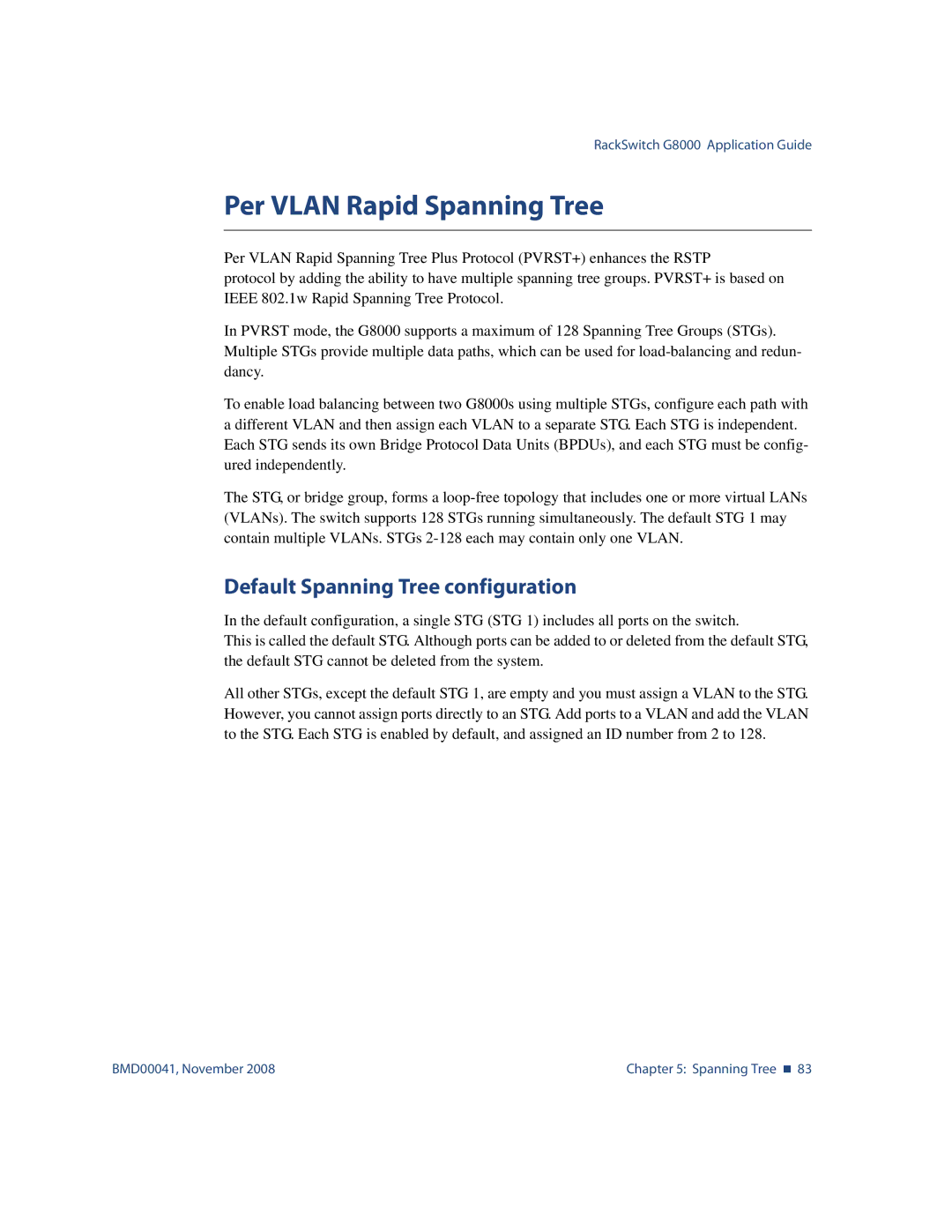RackSwitch G8000 Application Guide
Per VLAN Rapid Spanning Tree
Per VLAN Rapid Spanning Tree Plus Protocol (PVRST+) enhances the RSTP
protocol by adding the ability to have multiple spanning tree groups. PVRST+ is based on IEEE 802.1w Rapid Spanning Tree Protocol.
In PVRST mode, the G8000 supports a maximum of 128 Spanning Tree Groups (STGs). Multiple STGs provide multiple data paths, which can be used for
To enable load balancing between two G8000s using multiple STGs, configure each path with a different VLAN and then assign each VLAN to a separate STG. Each STG is independent. Each STG sends its own Bridge Protocol Data Units (BPDUs), and each STG must be config- ured independently.
The STG, or bridge group, forms a
Default Spanning Tree configuration
In the default configuration, a single STG (STG 1) includes all ports on the switch.
This is called the default STG. Although ports can be added to or deleted from the default STG, the default STG cannot be deleted from the system.
All other STGs, except the default STG 1, are empty and you must assign a VLAN to the STG. However, you cannot assign ports directly to an STG. Add ports to a VLAN and add the VLAN to the STG. Each STG is enabled by default, and assigned an ID number from 2 to 128.
BMD00041, November 2008 | Chapter 5: Spanning Tree 83 |
